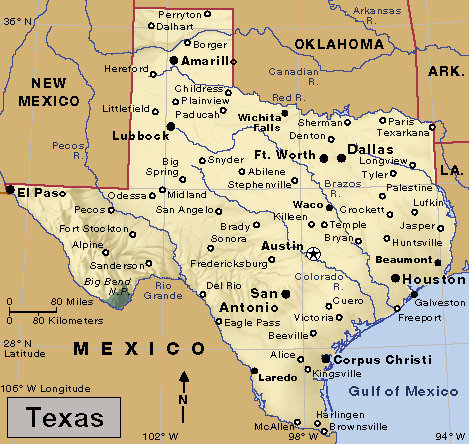Laredo, << luh RAY doh, >> Texas (pop. 255,205; met. area pop. 267,114), on the Pan American Highway, lies on the Rio Grande, along the southern edge of the state. It is the chief port of entry on the United States-Mexico border. The city has many jobs in transportation, freight handling, and border security. A railroad bridge, a pedestrian bridge, and several bridges used by motor vehicles link it with its sister city, Nuevo Laredo, in Mexico. Laredo is an important center of natural gas production. Electronics, automotive parts, and clothing are manufactured in the Laredo area. Laredo is the home of Texas A&M International University.

The city of Laredo was founded by a group of Spaniards in 1755. It then included what are now Laredo and Nuevo Laredo. Laredo and Nuevo Laredo became separate cities in 1848, when the Treaty of Guadalupe Hidalgo established the boundary between Mexico and Texas. The North American Free Trade Agreement (NAFTA, now United States-Mexico-Canada Agreement (USMCA)), which took effect in 1994, led to increased commercial traffic in the area. The city faces problems from the cross-border illegal drug trade. Laredo has a council-manager government. It is the seat of Webb County.
